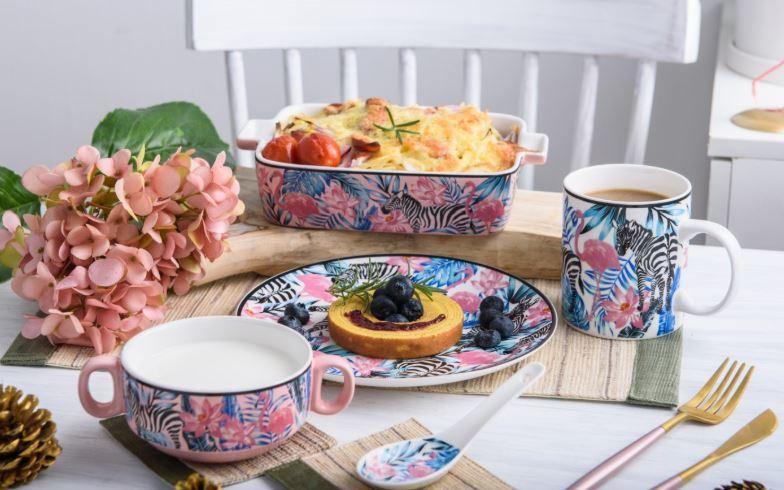

The bone china and fine china Crockery sets may look almost similar. But there are definitive differences between the two products. For starter, one will empty your pocket faster than the other. There are some misconceptions, too, such as the one that bone china plates set is less likely to chip as compared to the fine china set. So, let’s tell you the actual differences between the two, once and for all.
Difference between bone china and fine china:
Ingredients
The primary difference is in their raw material. Bone china gets its name due to the use of cow bone ashes in their manufacturing. Although, some people say that it does not necessarily need to be cow bones, but bones nonetheless. The amount of bone ash may vary. There is no standard percentage of cow bone that should be present in your dinner plates or the serving bowls that will define them like a bone china piece. It can be as low as 5% to as high as 45%. The other raw materials involved in the manufacturing of bone china pieces are ball clay, quartz, feldspar, and Kaolin, which a variety of clay.
The ingredients of the fine china pieces do not include cow bone ash or any bone ash for that matter. They have been around for a very long time. Their origin can be dated back to A.D. 620. Different people from different regions used a variety of ingredients to getting to the same result of fine china sets. Nowadays, feldspar, silica, steatite, ball clay is used to make the fine china pieces.
Manufacturing Process
It is not only the ingredients that differ between bone china and fine china products. The manufacturing process of the fine china products involves the fine grounding of the components, followed by their cleaning and firing in a mould. The firing temperature is almost 1200 degrees Celsius.
On the other hand, the manufacturing process of bone china products involves two firing processes. The first firing process makes the mixture of ingredients to shrink and glaze. The second firing step melts the glazed product of the first step into the final product.
Aesthetic
The presence of the cow bone ash gives the bone china products a warm texture as compared to the fine bone products. If you hold bowls made of bone china to a light source, then you will find a translucent surface in comparison to the solid white surface of the fine china bowls.
Fine china, on the other hand, has a distinct glaze effect and adds the beauty of its own.
Thickness
The difference in raw materials and manufacturing process makes the bone china products thinner than their fine china counterparts. They are also comparatively smoother.
So, go ahead and take your pick, bone china or fine china!


